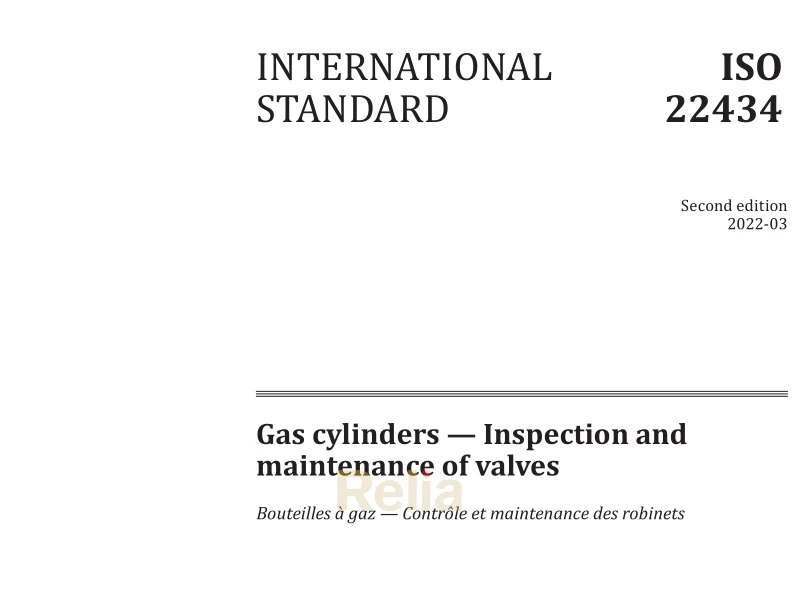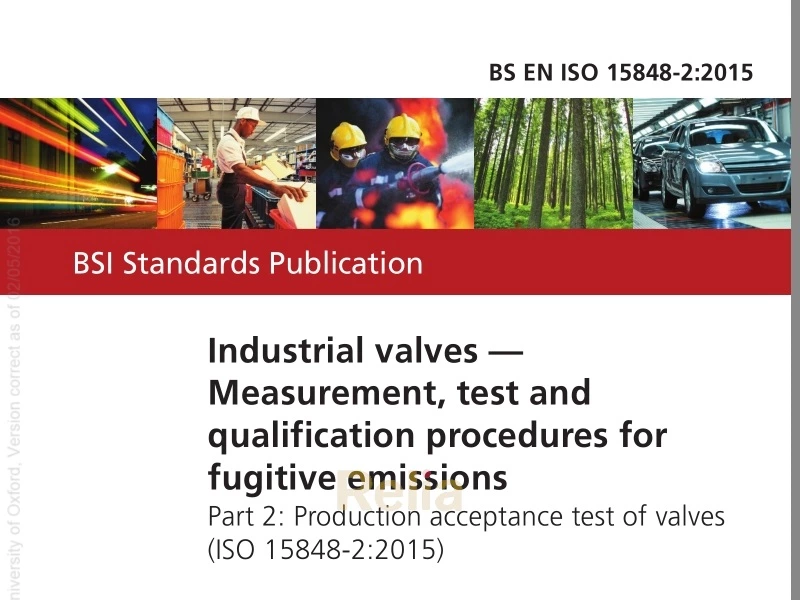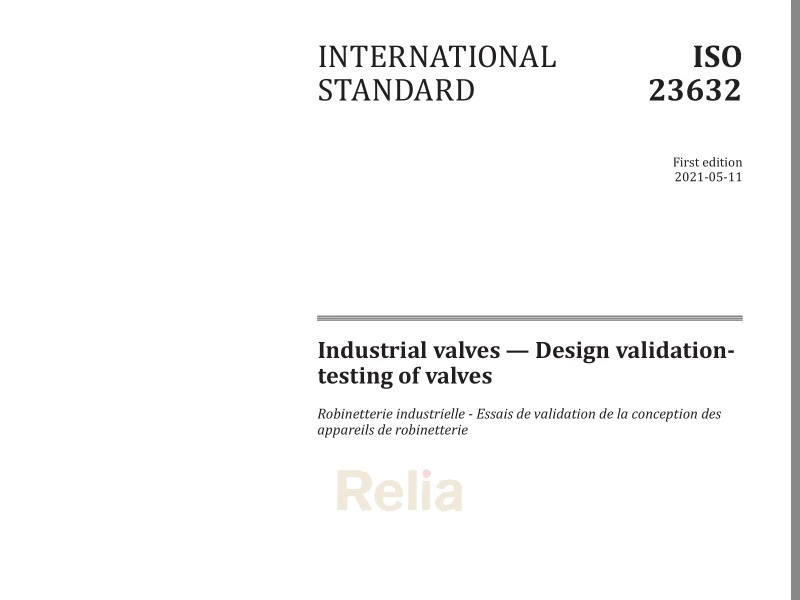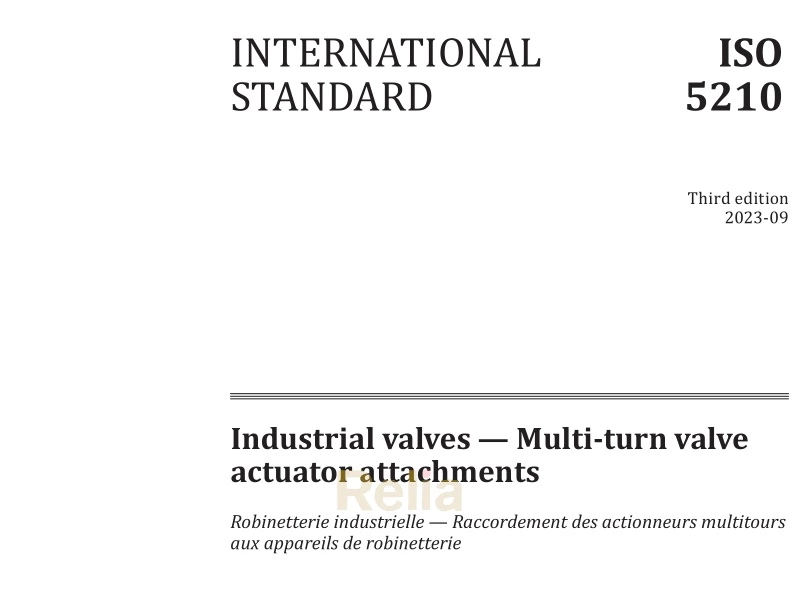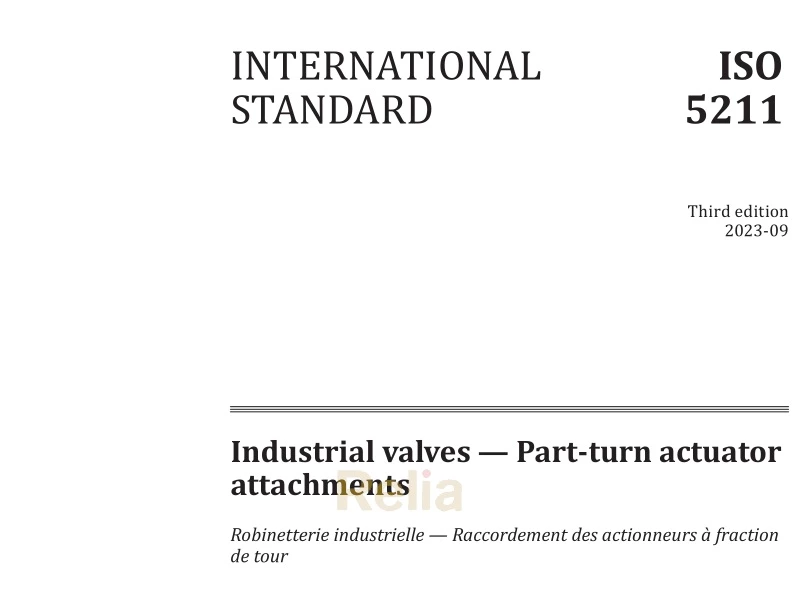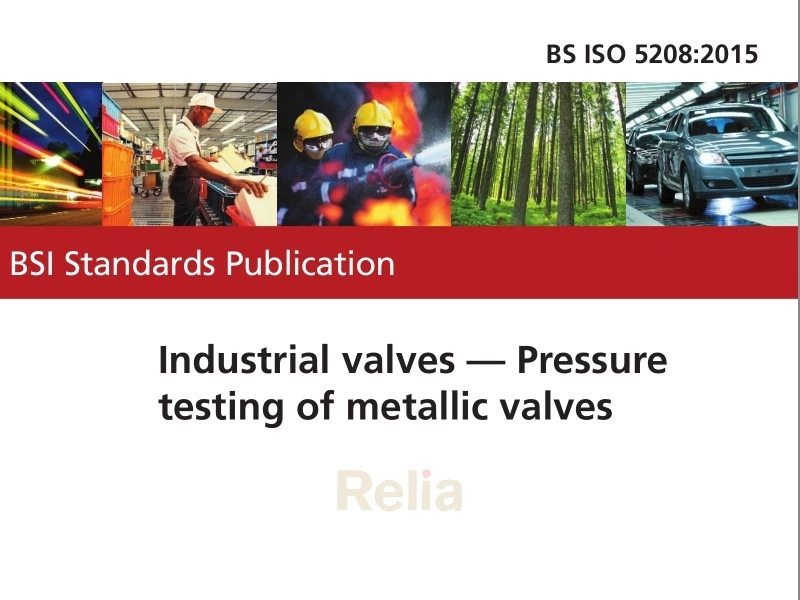BS EN ISO 17292: Metal ball valves for petroleum, petrochemical and allied industries
BS EN ISO 17292 Standard specifies the requirements for a series of metal ball valves suitable for petroleum, petrochemical, natural gas plants, and related industrial applications.
ISO 17292 covers valves of the nominal sizes DN
— 8; 10; 15; 20; 25; 32; 40; 50; 65; 80; 100; 150; 200; 250; 300; 350; 400; 450; 500
corresponding to nominal pipe sizes NPS
— ¼; ⅜; ½; ¾; 1; 1¼; 1½; 2; 2½; 3; 4; 6; 8; 10; 12; 14; 16; 18; 20;
and applies for pressure designations
— Class 150; 300; 600; 800 (Class 800 applies only for valves with reduced bore and with threaded and socket welding end);
— PN 16; 25; 40.
It includes provisions for testing and inspection and for valve characteristics as follows:
— flanged and butt-welded ends, in sizes 15 ≤ DN ≤ 500 (½ ≤ NPS ≤ 20);
— socket welding and threaded ends, in sizes 8 ≤ DN ≤ 50 (¼ ≤ NPS ≤ 2);
— body seat openings designated as full bore, reduced bore and double reduced bore;
— materials.
Table 1 — Minimum seat pressure/temperature rating
Pressure in bar (1 bar = 0,1 MPa = 105 Pa; 1 MPa = 1 N/mm2)
| Temperature b ℃ | PTFE seats a Floating ball |
Trunnion | Reinforced PTFE seats a Floating ball |
Trunnion | ||||
| DN ≤ 50 | 50 <DN ≤ 100 | DN>100 | DN >50 | DN > 50 | 50 < DN 100 | DN>100 | DN>50 | |
| NPS ≤2 | 2 < NPS ≤ 4 | NPS >4 | NPS >2 | NPS >2 | 2 < NPS ≤ 4 | NPS >4 | NPS >2 | |
| -29 to 38 | 69,0 | 51,0 | 19,7 | 51,0 | 75,9 | 51,0 | 19,7 | 51,0 |
| 50 | 63,6 | 47,1 | 18,2 | 47,1 | 70,4 | 47,8 | 18,4 | 47,8 |
| 75 | 53,3 | 39,2 | 15,2 | 39,2 | 59,9 | 40,4 | 15,6 | 40,4 |
| 100 | 43,0 | 31,3 | 12,1 | 31,3 | 49,4 | 33,1 | 12,8 | 33,1 |
| 125 | 32,7 | 23,3 | 9.1 | 23,3 | 38,9 | 25,8 | 10,0 | 25,8 |
| 150 | 22,4 | 15,4 | 6,1 | 15,4 | 28,3 | 18,4 | 7,2 | 18,4 |
| 175 | 12,1 | 7,5 | 3,0 | 7,5 | 17,8 | 11,1 | 4,4 | 11,1 |
| 200 | — | — | — | — | 7,3 | 3,7 | 1.6 | 3,7 |
| 205 | — | — | — | — | 5,2 | 2,3 | 1.0 | 2,3 |
For a given PN or Class designation, the assigned valve pressure/temperature ratings shall not exceed the shell ratings, (see 4.2).
5 Design
5.1 Flow passageway
The flow passageway includes the circular seat opening in the ball and the body runs leading thereto. The body runs are the intervening elements that link the seat opening to the end connection, e.g. to the thread end, weld end or socket end or to the end-flange. Collectively, the flow passageway through the ball and body runs is referred to as the flow passageway. The bore is categorized in this International Standard as full bore, reduced bore and double reduced bore. The minimum bore for each category shall be such that a hypothetical cylinder having a diameter in accordance with Table 2 can be passed through.
5.2 Body
5.2.1 Body wall thickness
5.2.1.1 The minimum valve body wall thickness, t m , shall be as specified in Table 3, except that for
butt-welding end valves the welding ends for connection to pipe shall be in accordance with Figure 1.
Table 2 — Cylinder diameter for categorizing bore size
| DN | Minimum bore diameter (mm) | NPS | |||
| Full bore | Reduced bore | Double reduced bore | |||
| PN 10, 16, 25 and 40 | — | PN: All | PN: All | ||
| Class 150 and 300 | Class 600 | Class: All | Class: All | ||
| 8 | 6 | 6 | 6 | N/A | 1/4 |
| 10 | 9 | 9 | 6 | N/A | 3/8 |
| 15 | 11 | 11 | 8 | N/A | 1/2 |
| 20 | 17 | 17 | 11 | N/A | 3/4 |
| 25 | 23 | 24 | 17 | 14 | 1 |
| 32 | 30 | 30 | 23 | 18 | 1-1/4 |
| 40 | 37 | 37 | 27 | 23 | 1-1/2 |
| 50 | 49 | 49 | 36 | 30 | 2 |
| 65 | 62 | 62 | 49 | 41 | 2-1/2 |
| 80 | 74 | 75 | 55 | 49 | 3 |
| 100 | 98 | 98 | 74 | 62 | 4 |
| 150 | 148 | 148 | 98 | 74 | 6 |
| 200 | 198 | 194 | 144 | 100 | 8 |
| 250 | 245 | 241 | 186 | 151 | 10 |
| 300 | 295 | 291 | 227 | 202 | 12 |
| 350 | 325 | 318 | 266 | 230 | 14 |
| 400 | 375 | 365 | 305 | 250 | 16 |
| 450 | 430 | 421 | 335 | 305 | 18 |
| 500 | 475 | 453 | 375 | 335 | 20 |
NOTE 1 N/A signifies that valves having this configuration are not within the scope of this International Standard.
NOTE 2 For Class 800, only valves having reduced port are within the scope of this International Standard.
a Polytetrafluoroethylene seats.
b Consult the manufacturer for maximum design temperature rating of the valve seats.
5.2.1.2 The minimum thickness requirements are applicable to and are measured from internally wetted
surfaces, i.e. up to the point where body seals are effective.
5.2.1.3 Local areas having less than minimum wall thickness are acceptable provided that all of the
following conditions are satisfied:
— the area of sub-minimum thickness can be enclosed by a circle the diameter of which is not greater than0.35 √dtm where d is the minimum bore diameter given in Table 2 and t m is the minimum wall thickness given in Table 3;
— the measured thickness is not less than 0,75 t m ;
— enclosed circles are separated from each other by an edge-to-edge distance of not less than
5.2.1.4 The manufacturer, taking into account such factors as component bolting or thread assembly loads, rigidity needed for component alignment, other valve design details and the specified operating conditions, is responsible for determining if larger wall thickness is required.
5.2.2 Flanged ends
5.2.2.1 Body end flanges shall comply with the requirements of ASME B16.5 for Class-designated valves and EN 1092-1 for PN-designated valves. Raised face end flanges shall be provided unless otherwise specified by the purchaser.
5.2.2.2 Face-to-face dimensions for flanged end valves shall be in accordance with ASME B16.10 for Class-designated valves or ISO 5752, Basic Series 1, 14, and 27 for PN-designated valves, with an appropriate tolerance: for DN u 250 of ± 2 mm and for DN W 300 of ± 4 mm.
5.2.2.3 Body or body cap end flanges shall be either cast or forged integral with the body or cap or cast or forged flanges attached by full penetration butt-welding. A purchaser requiring integral flange construction shall so specify. When a flange is attached by welding, it is required that the welding operator and welding procedure be qualified in accordance with the rules of ASME-BPVC, Section IX or the rules of ISO 9606-1 and ISO 15607, ISO 15609-1, ISO 15614-1, ISO 15614-2 and ISO 15610. Alignment rings, either integral or loose, used as a welding aid shall be completely removed following welding, with care being taken that the minimum wall thickness is maintained. Heat treatment, following welding, to ensure that the valve body and flange materials are suitable for the full range of service conditions, shall be performed as required by the material specification.
5.2.2.4 End flange facing finish shall be in accordance with ASME B16.5 for Class-designated valves or EN 1092-1 for PN-designated valves, unless otherwise specified by the purchaser.
Table 3 — Valve body wall thickness
| PN | 16 | 25 and 40 | — | — | PN | ||||||
| Class | 150 | 300 | 600 | 800 a | Class | ||||||
| DN | Minimum valve body wall thickness, zm mm | NPS | |||||||||
| Full bore | Reduced bore | Double reduced bore | Full bore | Reduced bore | Double reduced bore | Full bore | Reduced bore | Double reduced bore | Reduced bore | ||
| 8 | 2,7 | 2,7 | N/A | 2,9 | 2,9 | N/A | 3.1 | 3,1 | N/A | 3,3 | % |
| 10 | 2,9 | 2,9 | N/A | 3,0 | 2,9 | N/A | 3.4 | 3,3 | N/A | 3.6 | % |
| 15 | 3.1 | 3.1 | N/A | 3.2 | 3.2 | N/A | 3.6 | 3.6 | N/A | 3,9 | % |
| 20 | 3,4 | 3,4 | N/A | 3,7 | 3,7 | N/A | 4,1 | 4,1 | N/A | 5,2 | % |
| 25 | 3,9 | 3.8 | 3.8 | 4,1 | 4,1 | 4,1 | 4,7 | 4,6 | 4,6 | 6.0 | 1 |
| 32 | 4,3 | 4,2 | 4,2 | 4,7 | 4,6 | 4,6 | 5,1 | 5,0 | 5,0 | 6.4 | 1% |
| 40 | 4,7 | 4,5 | 4,5 | 5,2 | 5,0 | 5,0 | 5,5 | 5,4 | 5,4 | 5,8 | 1% |
| 50 | 5,5 | 5,3 | 5,3 | 6.2 | 5,9 | 5,9 | 6,3 | 6.0 | 6.0 | 7,0 | 2 |
| 65 | 5,7 | 5,6 | 5,6 | 6.7 | 6,5 | 6.5 | 6.7 | 6.4 | 6.4 | N/A | 2% |
| 80 | 6 | 5,9 | 5,9 | 7,1 | 6,9 | 6,9 | 7,6 | 7,2 | 7,2 | N/A | 3 |
| 100 | 6,3 | 6,3 | 6,3 | 7,6 | 7,6 | 7,6 | 9,2 | 8,7 | 8,7 | N/A | 4 |
| 150 | 7.1 | 6,9 | 6,9 | 9,3 | 8,9 | 8,9 | 12,6 | 11,8 | 11,8 | N/A | 6 |
| 200 | 7,9 | 7,7 | 7,7 | 10,9 | 10,4 | 10,4 | 15.7 | 14,7 | 14,7 | N/A | 8 |
| 250 | 8,7 | 8,4 | 8,4 | 12,5 | 12,0 | 12,0 | 18,9 | 17,6 | 17,6 | N/A | 10 |
| 300 | 9,5 | 9,2 | 9,2 | 14,2 | 13,5 | 13,5 | 22,3 | 20,7 | 20,7 | N/A | 12 |
| 350 | 10 | 9,6 | 9,6 | 15,2 | 14,4 | 14,4 | 24,1 | 22,5 | 22,5 | N/A | 14 |
| 400 | 10,8 | 10,4 | 10,4 | 16,8 | 16 | 16 | 27,3 | 25,4 | 25,4 | N/A | 16 |
| 450 | 11,7 | 11,1 | 11,1 | 18,7 | 17.3 | 17.3 | 31,1 | 28,9 | 28,9 | N/A | 18 |
| 500 | 12,4 | 11,9 | 11,9 | 20,2 | 18,8 | 18,8 | 33,2 | 30,8 | 30,8 | N/A | 20 |
NOTE N/A signifies that valves having this configuration are not within the scope of this International Standard.
For Class 800, only valves having reduced ball ports are within the scope of this International Standard.
5.2.3 Butt-welding ends
5.2.3.1 Butt-welding ends shall be in accordance with Figure 1 and Table 4, unless otherwise specified by the purchaser.
5.2.3.2 End-to-end dimensions for Class-designated valves shall be in accordance with ASME B16.10 for either the long or short pattern, or in accordance with EN 12982 for PN-designated valves.
5.2.4 Socket welding ends
5.2.4.1 The socket bore axis shall coincide with the end entry axis. Socket end faces shall be perpendicular to the socket bore axis. The socket bore diameter and its depth shall be as specified in Table 5.
5.2.4.2 The minimum socket wall thickness extending over the full socket depth shall be as specified in Table 6.
5.2.4.3 End-to-end dimensions for socket welding end valves shall be established by the manufacturer.
5.2.5 Threaded ends
5.2.5.1 The threaded end thread axis shall coincide with the end entry axis. The minimum wall thickness at the threaded end shall be as specified in Table 6. An approximate 45° lead-in chamfer, having an approximate depth of one-half the thread pitch, shall be applied at each threaded end.
5.2.5.2 The end threads for PN-designated valves shall be taper pipe threads meeting the requirements of ISO 7-1, or, for Class-designated valves, shall be taper pipe threads meeting the requirements of ASME B1.20.1. Pipe threads shall be gauged in accordance with ISO 7-2 or ASME B1.20.1, as applicable.
5.2.5.3 End-to-end dimensions for threaded end valves shall be established by the manufacturer.
5.2.6 Body openings
Trunnion-mounted valves that employ upstream sealing seats shall be fitted with a DN 15 (NPS ½) test plug having threads in accordance with 5.2.5.2 in order to complete the closure tightness test. Other tapped openings, for any purpose, are permitted only when specified by the purchaser.
5.2.7 Anti-static design
Valves shall incorporate an anti-static feature that ensures electrical continuity between the stem and body of valves DN u 50, and between the ball, stem and body of larger valves. The anti-static feature shall have electrical continuity across the discharge path with a resistance not exceeding 10 Ω from a power source not exceeding 12 V d.c. when type tested on a new, dry, as-built valve after pressure testing and cycling of the valve at least five times.
5.2.8 Anti-blow-out stem
The valve design shall be such that the stem seal retaining device is not the sole means used to retain the stem. The design shall ensure that, while under pressure, the stem is not ejected from the valve by the disassembly of valve external parts, e.g. gland and gland flange bolting. See Annex B.
5.2.9 Ball-stem construction
5.2.9.1 The valve design shall be such that if a failure occurs either at the stem-to-ball connection or any part of the stem within the pressure boundary, no portion of the stem is ejected when the valve is under pressure.
5.2.9.2 Both the stem-to-ball connection and all of that part of the stem within the pressure boundary, shall be designed to exceed the torsional strength of the stem external to the packing by at least 10 %.
5.2.9.3 The stem and the connection between the stem and the ball shall be designed to preclude permanent deformation or failure of any part when a force applied to the direct operating lever or the operational means of a manual gear operator, whichever is furnished with the valve, transmits a torque to the valve stem equal to the greater of either
a) 20 N⋅m, or
b) twice the manufacturer’s recommended torque.
5.2.9.4 The manufacturer’s recommended torque shall be based on clean, dry air or nitrogen at a
differential pressure equal to the maximum differential service pressure rating of the valve.
5.2.10 Ball construction
The ball shall have a cylindrical bore and shall be of a solid, one-piece or two-piece construction. Otherconstructions, such as cored cavity, sealed cavity, or hollow ball, may be furnished only if agreed to by the purchaser.
5.2.11 Operating means
5.2.11.1 Valves that are solely manually operated, i.e. without an attached gear or power assist device, shall be fitted with lever-type handles unless otherwise specified by the purchaser.
5.2.11.2 Gear operators, when specified or required to meet the operating force requirements of 5.2.11.3, shall be provided with handwheels for actuation.
5.2.11.3 Unless otherwise specified by the purchaser, the length of the lever type handle or the diameter of the manual gear handwheel shall be sized so that the applied input force to open or close the valve does not exceed 360 N at the torque value specified in 5.2.9.3.
5.2.11.4 For lever-operated valves, position stops shall be provided at both the full open and full closed positions.
5.2.11.5 Valves shall be designed to close when the lever or handwheel is turned in a clockwise direction.
5.2.11.6 Handwheels on manual gear operators shall be marked to indicate either the direction of opening or closing.
5.2.11.7 Lever-type handles shall be mounted with the handle parallel to the ball bore. If the purchaser specifies round or oval direct operating handwheels, a permanent means of indicating the open and closed positions shall be provided.
5.2.11.8 Lever or manual gear box handwheel design shall be such that the lever or gearbox indicating means do not assemble in other than the correct configuration for indicating the open and closed positions.
5.2.11.9 An indication of the position of the flow passageway through the ball shall be integral with the valve stem. This indication may be by a permanent marking on the stem or by a shaping of the stem.
5.2.11.10 Levers, handwheels, and other operating mechanisms shall be fitted to the valve such that they can be removed and replaced without affecting the integrity of the stem or body seal or retention of the stem.
5.2.12 Glands
5.2.12.1 Adjustable packing glands shall be accessible for tightening stem seals without the disassembly of either the valve or operator parts.
5.2.12.2 Packing glands that are threaded into bodies or covers (see Annex B) shall not be used.
5.2.12.3 Vertically split glands shall not be used.
5.2.12.4 Position stops integral with the gland, gland flange or gland bolting shall not be used.
5.2.13 End flange facing interruptions
5.2.13.1 Ring-shaped radial gaps, located in what would be the seating face area of a centred ASME B16.20-style spiral wound gasket on the flange facing area of end flanges, shall not exceed 1,5 mm.
The gap is shown as dimension b in Figure 2. An example of the occurrence of this type of gap is one that can exist between the outer periphery of a body insert and the inner bore of the body end flange of the valve. This is illustrated in Figure 2.
5.2.13.2 For ball valves designed with a body insert (see Annex B) with a gasket seating face outer diameter located within the seating area of a centred ASME B16.20-style spiral wound gasket, the body insert flange face shall not protrude beyond the valve body end flange face. The body insert flange face shall not be recessed below the body end flange face by more than 0,25 mm. The recess is shown as dimension a in Figure 2.
5.2.13.3 Threads for body inserts shall have a thread shear area such that the resultant thread shear stress is u 70 MPa at an internal pressure equal to the 38 °C pressure rating.
5.2.14 Shell joints
5.2.14.1 Shell joints are characterized as bolted body-to-cap joints, threaded body-to-cap joints, bolted cover joints and threaded cover joints. Body-to-cap joints are those that could be subject to piping mechanical loads; cover joints, those that are not. See Annex B for part name identification.
5.2.14.2 Bolting used for assembly of shell joints shall be studs or continuously threaded stud bolts with nuts or cap screws. Nuts shall be semi-finished hexagons conforming to ASME B18.2.2, ISO 4032, ISO 4033 or ISO 4034. ASME specified bolting 25 mm diameter and smaller shall have coarse (UNC) threads. ASME specified bolting larger than 25 mm diameter shall be 8 thread series (8UN). ASME specified bolt threads shall be Class 2A and nut threads shall be Class 2B, conforming to ASME B1.1. Metric specified bolting M30 and smaller shall have coarse threads. Metric specified bolting larger than M30 shall be fine threads with 3 mm pitch. Metric specified threads shall be in accordance with ISO 261 and ISO 965-2 tolerance class 6g.
